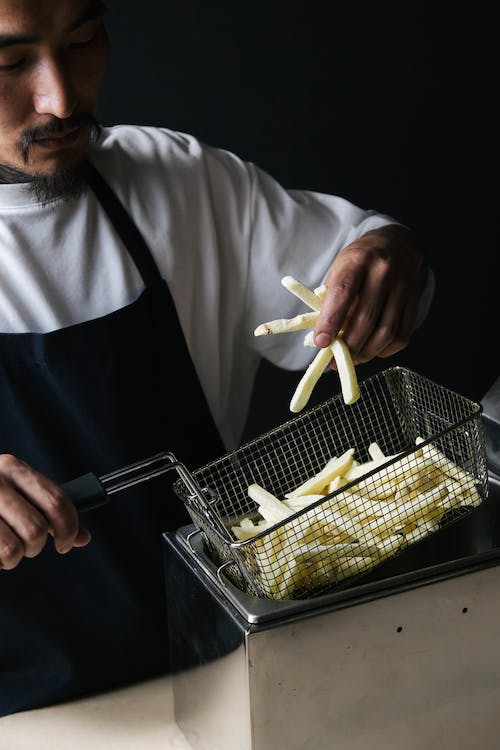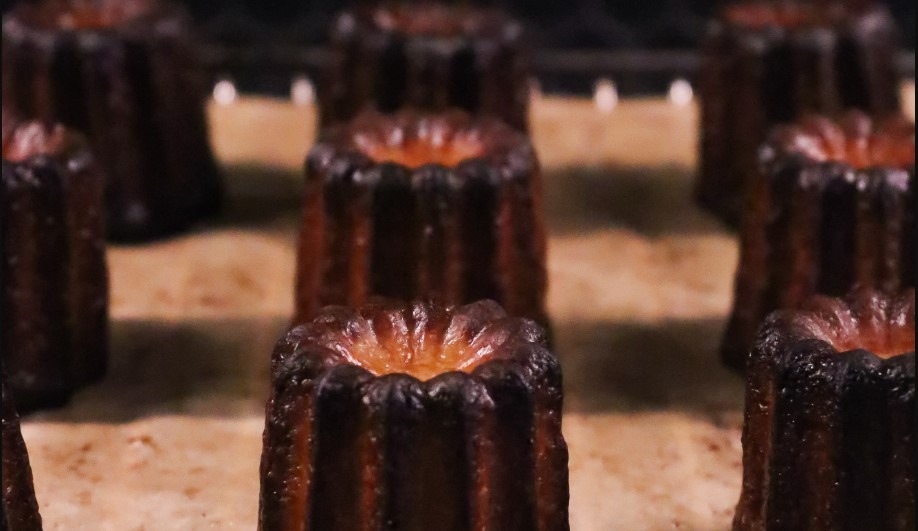“This is my invariable advice to people: Learn how to cook – try new recipes, learn from your mistakes, be fearless, and above all have fun!”
― Julia Child, My Life in France
One of the best ways to get to know a region is through its food and wine.
Each region’s cuisine has its own special history and Sommeliers swear you can even “taste the earth” in a good bottle of wine. Learning to cook French dishes region-by-region feels like a trip around the country, and that’s just what my friends at Cook Street Culinary School are offering right now.
Starting in Bordeaux with last week’s class and continuing on to Provence this summer, Cook Street’s new Food and Wine series is taking a Tour de French Food with hands-on instruction in each French region’s cuisine, wine, and history. Allons-y!
Oysters Mignonette
With the first class focused on Bordeaux, Chef John started us out with a glass of 2012 Château Graville Lacoste Blanc and Oysters mignonette (it’s a tough job, but someone’s gotta do it!).
There’s sort of a two-step process here:
- making a tasty Bordeaux mignonette
- learning how to shuck the oysters themselves.
After carefully explaining the historical purpose for each ingredient in the mignonette, we started to toss in each component, tasting as we went along. Once the group was satisfied, we grabbed shucking knives, towels, and a handful of Kumamotos to crack open. This is when things really got fun!
Like muscles, Oysters should come to you alive and thus need to be preserved on ice until shucking time.
The first trick of shucking is finding the sweet spot, the little soft part along the edge, usually right by the bump on the base (as Chef John demonstrates in the photos below). You then hold the oyster in a towel and slip the knife in (this was a little harder than it sounds, and required some practice with the help of our teaching assistants).
“…no one is born a great cook, one learns by doing.”
― Julia Child, My Life in France
A twist of the blade, a trace of the lid, et voilà! Oysters! … almost.
You can then remove the oyster meat, clean the shell, and just replace the oyster meat to serve, but Chef John adds one more step. A mignonette isn’t quite finished until the oyster juice is incorporated, so we pooled our juices in a small bowl and mixed them into the mignonette before serving.
It just adds that slight “taste of the sea” oysters are famous for!
Our oysters were topped with fleur de sel, plated on a bed of coarse sea salt, and served with a delicious wine pairing, selected for its uniqueness and traditional origins.
Chef John reminded us that, before Americans entered the wine scene, Bordeaux was actually more well known for its whites than its reds! The Semillon grape had its own stake in the product for a while, but was dominated by the Sauvignon Blanc grape once American tastes started to influence exports. A balanced blend of Semillion and Sauvignon Blanc grapes from the Graves part of Bordeaux makes for one of the more classic wines from the region, historically speaking, and you can still find a good one in the states if you look hard enough.
Chef John treated us to a 2012 Château Graville Lacoste Blanc imported by Kermit Lynch, who is a very reputable importer for the region.
Foie Gras Pâté
After shooting back quite a few oysters, we moved on to that most controversial of dishes – a foie gras pâté. I have no moral qualms about eating this dish that arguably transformed me into a foodie, but I’ve never actually worked with it myself.
We were given an entire liver to work with for the class, which was very generous.
“If you’ve ever wanted to make mistakes with foie gras on someone else’s dime, this would be the time,”
added Chef John, who taught us how to score slices of foie and flash sear it without too much melting (pro-tip: use a nonstick pan because they wont get as hot as cast iron). Some successes and failures later, all the tasty bits went into the blender for pâté making.
The pâté blended a generous sprinkling of regional herbs with 1 parts seared foie (though you could use chicken livers) and 2 parts slowly integrated butter.
“Fat gives things flavor.”
― Julia Child
After blending to almost a liquid consistency, a pâté should go into a ramekin and then refrigerate until solid. We sped things up a bit by putting our pâté on ice.
Along with our pâté, we nibbled on brioche, apple compote, berries and shallots, quince paste, and roquefort – a blue cheese that, as Chef John says, “takes no prisoners. It’s unapologetic. Unlike Gorgonzola, Roquefort doesn’t care what your feelings are about it.”
The pairing for our pâté was a Bordeaux specialty wine – Sauturnes. If you’ve read up on your Bordeaux wines, you’ll remember this one coming from grapes that achieve a “noble rot” which gives the grapes an extra sweetness. It’s a perfect balance to the salt and fat of the foie gras and roquefort and makes for a classic pairing.
Steak Bordelaise
Our third course was a lesson in Steak Bordelaise, a classic Bordeaux recipe with many of the same ingredients as a Bordeaux-style Steak au Poivre (great for grocery shopping).
Like an Au Poivre sauce, the Bordelaise takes advantage of cognac and beef or veal stock, which in this case we reduced substantially. We also added a heavily reduced red wine (a Merlot-based right-bank Bordeaux like a St. Émilion) and some caramelized onions to the pot on heat. Some cooked leeks and a pop off the heat, we were ready to add a touch of creme fraiche and fatty bone marrow (though you could use foie gras as well).
The result was a rich, creamy, buttery deliciousness that had us all saying “WOW.” Plate it under some whipped potatoes and a medium-rare steak for a deep red wow-factor sure to impress your friends.
This final savory course was the perfect opportunity for us to compare and contrast the Left- and Right- bank Bordeaux reds that the region is now famous for. Again, if you’ve already read through our Bordeaux wine guide, you know that the major difference is the dominate grape in each blend: Left banks are likely to be Cabernet Sauvignon-based and Right banks are likely to be Merlot-based.
Canelés
“A party without cake is just a meeting”
― Julia Child
A canelé is a specialty of the Bordeaux region, distinctive due to its cylindrical shape. A simple recipe of egg, sugar, milk and flour flavored with rum and vanilla, the batter is baked in a specialty mold, giving the canelé a caramelized exterior and custard-like inside.
After so much kitchen work, it was a real treat to see these canelés with chocolate crème anglaise come out of the oven with no work on our part. We still got to take home the recipe, but we went from steak to custard-cake right away – a nice reward and incentive to cook another day!
If you’re ready to master the Art of French Cooking Class, Cook Street’s next destination is Provence! Be sure to reserve your spots now as the class will fill up quickly.


